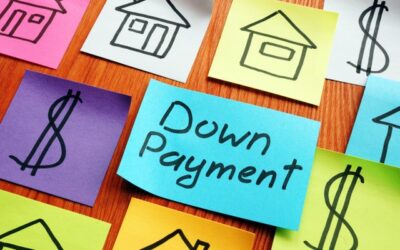Making homeownership a reality for lower-income borrowers is the foundation of the Fannie Mae HomeReady and Freddie Mac Home Possible mortgage programs. These affordable housing loans have lower down payment requirements than traditional mortgage loans and provide other benefits that help borrowers. Brian Beard, assistant vice president of mortgage production at Centris Federal Credit Union, provides insight to help distinguish between these two programs and determine if either may be right for you.
HomeReady Mortgage Program Overview
The Fannie Mae HomeReady mortgage program is designed for low-income borrowers and is available to both first-time and repeat homebuyers. The most prevalent benefit of this mortgage is that it requires only a 3% down payment, compared to the 5% down payment typically required for most traditional mortgages.
Additionally, borrowers can benefit from lower standard mortgage insurance premiums when the loan-to-value (LTV) ratio falls between 81% and 97%. Borrowers can even cancel monthly mortgage insurance payments when the LTV drops below 80%.
Another benefit of HomeReady is the opportunity to add co-borrowers onto the loan who do not occupy the residence. Beard says that “at least one borrower must live on-site, and all borrowers may be subject to the income limits; however, this allows parents, guardians, other family members, and so on, to assist if they wish.”
“The 3% down payment, lower mortgage insurance coverage, and overall flexibility can make it a great option for many borrowers,” states Beard. “Plus, borrowers are allowed to use a variety of sources to fund the down payment or closing costs, which can be a major benefit.”
To be eligible for the HomeReady program, borrowers must have a credit score of 620 or higher. As for HomeReady income limits, borrowers must earn an income that is 80% or less of the area median income (AMI) in which the property is located. If all borrowers occupying the home are first-time homebuyers, then at least one borrower is required to complete homeownership education.
Borrowers can apply for a Fannie Mae HomeReady loan through a private lender that offers the program. There are many HomeReady lenders throughout the country, and Centris Federal Credit Union is one of them, right here in Nebraska and Iowa.
Home Possible Mortgage Program Overview
The Freddie Mac Home Possible mortgage program is like the Fannie Mae HomeReady program, as it’s designed for low- to moderate-income borrowers and is open to first-time or repeat buyers. It requires a 3% down payment and, like HomeReady, offers lower standard mortgage insurance premiums when the LTV is between 81% and 97%. After the LTV falls below 80%, borrowers are allowed to cancel their monthly mortgage insurance. Additionally, co-borrowers may be added to the loan who do not occupy the residence.
“Like the HomeReady loan,” says Beard, “Home Possible allows you to use gift funds, employer-assistance programs, secondary financing, and more to cover the down payment or closing costs. You don’t see that type of flexibility with traditional mortgage loans.”
One key difference between the Home Possible and HomeReady programs is in their eligibility requirements. Home Possible requires a slightly higher credit score of 660 or higher, but the income limits for Home Possible are similar to HomeReady: borrowers must earn an income that is 80% or less of the AMI in which the property is located. Home Possible also requires homeownership education.
To apply for a Freddie Mac Home Possible loan, borrowers must work with a private lender that offers the program. Centris Federal Credit Union is one of them!
Why These Programs Matter for Affordable Homeownership
Let’s face it — saving up for a 20% down payment with rising costs of living and housing isn’t feasible for a lot of borrowers. That’s why low-income mortgage programs like HomeReady and Home Possible are so important.
“Not only do they offer critical down payment assistance and relief to borrowers, but they have other perks that make homeownership more obtainable for a lot of people,” emphasizes Beard. “Without programs like these, many may struggle to afford a home under conventional mortgage standards.”
Comparing HomeReady and Home Possible
Side-by-Side Program Comparison
| HomeReady | Home Possible | |
| Minimum Down Payment Requirement | 3% | 3% |
| Mortgage Insurance Requirement | Yes, until 80% LTV is reached | Yes, until 80% LTV |
| Flexible Down Payment and Closing Cost Sources | Yes | Yes |
| Minimum Credit Requirement | 620 | 660 |
| Income Limit | 80% of AMI | 80% of AMI |
| Homebuyer Education Requirement | Yes | Yes |
How to Decide Which Program is Right for You
“Whether the HomeReady or Home Possible will be better for you depends on what eligibility requirements you meet and what you’re looking for,” states Beard. “If you’re looking for a program that will work with a lower credit score, you may want to look at HomeReady. If you have a higher credit score and want some flexibility on where down payment and closing cost funds come from, you may want to consider Home Possible.”
There is more to these programs than what’s covered here, and your lender may have slightly different requirements or terms. Be sure to discuss all the details with your mortgage loan originator to find a program that suits your needs and goals.
Shared Benefits of Both Programs
While HomeReady and Home Possible have slightly different requirements, they have shared benefits that can be invaluable to borrowers.
- As low as 3% down payment requirement
- Flexible income sources for down payment and closing cost funds
- Reduced mortgage insurance requirements
- Available for first-time homebuyers
- Co-borrowers may be added to the loan
Who Benefits from These Loan Programs?
The HomeReady and Home Possible mortgage programs are designed for borrowers with lower incomes. Those who meet the requirements and have limited cash for a down payment may find the most benefit in these programs.
- First-time home buyers
- Low- to moderate-income families
- Multigenerational or multi-income households
How to Get Started with a HomeReady or Home Possible Loan Through Centris
“The process for applying for a HomeReady or Home Possible loan is straightforward, and at Centris, we like to make the process as easy as possible for our members,” says Beard. Here’s a step-by-step process for applying:
- Review and compare HomeReady, Home Possible, and other mortgage programs that may benefit you. Consider their pros and cons and determine which one best fits your financial goals.
- If you find that HomeReady or Home Possible may be right for you, your next step will be to find a mortgage lender that provides these loans and see if you qualify. At Centris, we proudly offer these loans to our qualifying members.
- Work with a mortgage loan originator to assist you in applying, educating you on all the details, and helping you on your homebuying journey.
- If you get approved, your lender will set your mortgage rate and decide how much money you’re approved for. From there, you can start looking for a home or make an offer!
Fannie Mae’s HomeReady and Freddie Mac’s Home Possible mortgage programs can be excellent options for borrowers with lower incomes or those looking for flexibility. At Centris, we’re proud to offer the HomeReady and Home Possible programs to help our members achieve homeownership, while also empowering our communities with accessible programs that support their journey.
Whether you want to see if you qualify or start the process, our team of expert mortgage loan originators is here to help. Visit our website to find an expert near you and start your new home journey today!
Federally Insured by NCUA. Equal Housing Lender.




